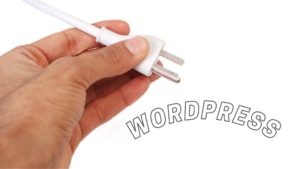It’s little wonder that some 76 million websites worldwide are designed and administered via the WordPress platform given the ease with which any one—from tech newbies to Internet and design pros—can get their blog or e-commerce site up and running. Indeed, WordPress powers a staggering 26 percent of the Internet and offers tens of thousands of plugins, themes and more that allow users to express themselves through myriad designs and customizations.
But as easy and intuitive as WordPress is (compared to more complex and proprietary website building and management platforms) it’s still easy to make some common mistakes when you’re new to the program. And making some of these mistakes can cost you time, cause frustration and, unfortunately, severely compromise the security and safety of your site for you and your users.
So how can you avoid and remedy some common rookie mistakes? Read about the issues WordPress gurus run across most frequently.
- By far one of the most common mistakes people make is using the default “admin” as the permanent user login name. When WordPress is first installed, an administrator controls the site, dealing with updates, posts, revamping pages etc. However, some installation programs don’t allow users to change the username during the installation process and it remains “admin.” And according to WordPress experts, the username “admin” is hugely attractive to hackers—they only need to guess your password and they have unlimited access to your site. So if you’re still working off the “admin” user login, change it immediately by creating a new user (this is also a good time to change your old password). Then delete the “admin” username and begin attributing all posts to the new name.
- Imagine losing everything you’ve worked for in an instant? Every post, every original piece of artwork, your payment system and so on. Failing to back up your data on a regular basis is another one of the most common oversights for WordPress newbies, as many of them rely on their web hosting company to deal with the issue. There are a host of plugins both free and paid that automatically back up your site on a regular schedule, so there’s no reason not to install one immediately. Many of them work on a “set it and forget” basis, so once installed you can just let it do its thing. If you don’t want to use one of the plugins, at the very least back up your database to Google Drive or Dropbox or to an external device such as zip or thumb drive.
- Failing to keep on top of updates is another fault of which many WordPress users are guilty. And updates aren’t important for the core program only: when WordPress unveils its latest version, many plugins do so as well so they can remain fully functional and compliant with whatever changes were made to the platform. So it’s important that, when prompted to update, owners and administrators do so as soon as possible and don’t put it off until the point when they may be several versions behind. Remember that updates just don’t make the program better, more efficient, prettier etc.: they also often contain important patches for security flaws that are critical to keeping your site safe from hackers.
- Speaking of security, far too often new WordPress users think that having the default, built-in security that come with the base program is enough to keep their site safe from hackers, viruses and bugs and the like. And while those programs are pretty good and being made better all the time, you should have other programs in place that go beyond and add an extra layer of safety. At the very least they’ll provide more piece of mind, an important consideration for those website owners who have better things to do that constantly worry whether or not their site is at risk.
- On the design side of things, too many users overload a site with huge images that cripple your hosting account by simply taking up too much space. This can dramatically affect the rate at which your page loads, which is a big turn off for visitors to your site. So only upload images at a size that your chosen theme can handle, and consider using an image compression plugin that takes much of the guesswork out of the process.
- Lastly, it’s tempting for new users to WordPress to amass tons of themes, plugins and widgets from a wide variety of sources. And while it’s certainly fun to experiment with different design options and customize your site, having too many means some of them will be from unreliable sources, which contributes to potential security problems. Also, the act of “hoarding” plugins, themes and widgets is a terrible idea as it can hamper site performance. So confine yourself to installing quality programs from trusted sources that have a proven track-record of consistent updates, and make sure the features you’re getting from one plugin, for example, aren’t duplicated in another plugin: you most likely don’t need both, so choose one and dump the other.


